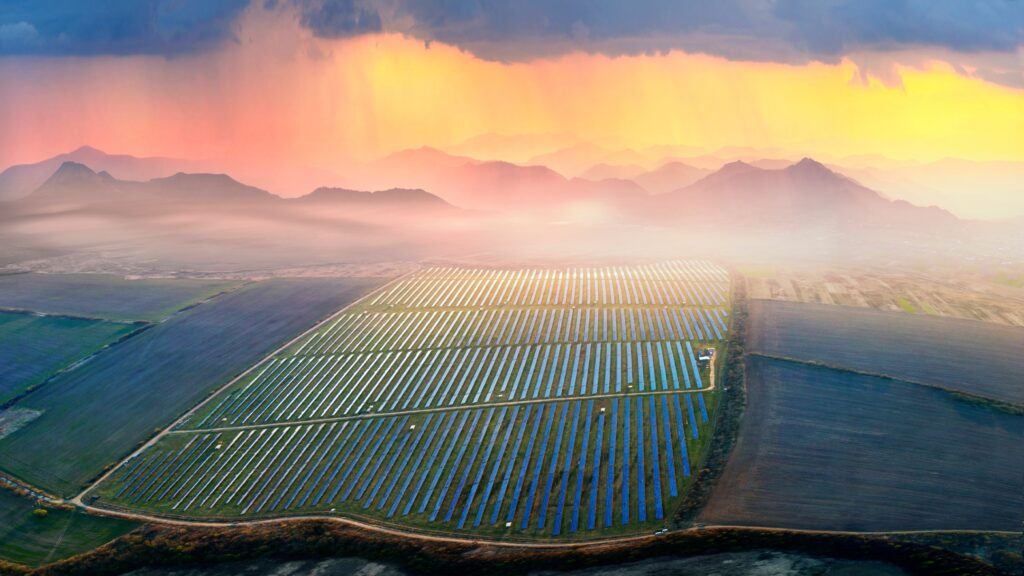Investment and Grid Bottlenecks Threaten Momentum, IRENA and Partners Warn Ahead of COP30
The world risks falling short of its renewable energy and efficiency targets despite achieving record deployment last year, warns a new report jointly published today by the International Renewable Energy Agency (IRENA), the COP30 Brazilian Presidency, and the Global Renewables Alliance (GRA). The findings were presented at a high-level pre-COP30 gathering in Brasília.
According to the report, global renewable energy capacity grew by an unprecedented 582 GW in 2024 – the largest single-year increase to date. Yet this remains insufficient to achieve the COP28 UAE Consensus commitment to triple total renewable capacity to 11.2 TW by 2030. To align with that target, the world must now install around 1,122 GW of new capacity annually from 2025 onwards, equating to a 16.6% yearly expansion rate for the rest of the decade, the second official tracking study on the UAE Consensus has revealed.
Titled Delivering on the UAE Consensus: Tracking progress toward tripling renewable energy capacity and doubling energy efficiency by 2030, the report also flags worrying stagnation in energy efficiency. In 2024, global energy intensity improved by just 1%, far below the 4% yearly progress required to meet the goal of doubling efficiency by 2030 and keeping the 1.5°C temperature limit achievable.
The report calls for urgent action to:
- integrate renewable targets into national climate plans (NDC 3.0) ahead of COP30 in Belém;
- double collective NDC ambition to align with the global renewables goal; and
- scale investment in renewables to at least USD 1.4 trillion per year in 2025–2030 –more than doubling the USD 624 billion invested in 2024.
In light of the report findings, United Nations Secretary-General António Guterres said: “The clean energy revolution is unstoppable. Renewables are deployed faster and cheaper than fossil fuels – driving growth, jobs, and affordable power. But the window to keep the 1.5°C limit within reach is rapidly closing. We must step up, scale up and speed up the just energy transition – for everyone, everywhere.”
Francesco La Camera, Director-General of IRENA added: “The world has broken renewable capacity records, but records alone will not keep 1.5°C alive. Renewables are not just the most cost-effective climate solution; they are the biggest economic opportunity of our time. This report shows the path: accelerate deployment, modernise grids, scale clean-tech and strengthen supply chains. Every dollar invested brings growth, jobs and energy security. As the custodian agency tracking progress toward the global renewables goal, we call for greater ambition. By raising targets, mobilising finance and deepening cooperation, major economies can lead the energy transition and make COP30 a milestone.”
Ben Backwell, Chair of the Global Renewables Alliance, said: “The private sector is driving the energy transition, providing three-quarters of global clean energy investment. Our industries, led by wind, solar and hydropower, are already delivering growth, jobs and security. What we need now are long-term government plans that match national ambitions; we need pipelines that deliver projects. Plans must deliver enabling action on grids and storage and help maximise the benefits of the energy transition. This report shows that the march to renewable energy abundance is underway – and it’s time for us to accelerate.”
The world’s major advanced and emerging economies must take the lead, according to the recommendations of the new report. G20 nations are projected to account for over 80% of global renewables by 2030, with the richest developed economies of the G7 expected to shoulder a leadership role by raising their share to around 20% of global capacity within this decade.
Major global economies must also deliver on climate finance, meeting the USD 300 billion annual floor of the new collective quantified goal (NCQG) and scaling up towards the aspirational USD 1.3 trillion confirmed at COP29 in Azerbaijan.
Beyond renewables, the report underlines the urgent need for investment in grids, supply chains, and clean-tech manufacturing for solar, wind, batteries and hydrogen.
While renewable energy investments grew by 7% in 2024, actual disbursements remain far below the levels required to build robust project pipelines and accelerate construction. As to supply chains, fair and transparent trade practices must be ensured for critical renewable energy technologies and international co-operation pursued to safeguard trade corridors for key materials and components.
Furthermore, strategic investment in modernising and expanding electricity grids is the essential foundation for integrating new capacity and strengthening energy security. Between now and 2030, an estimated USD 670 billion must be directed each year towards grids, with further investment required to rapidly scale up energy storage solutions, facilitate renewable integration and safeguard grid stability.

